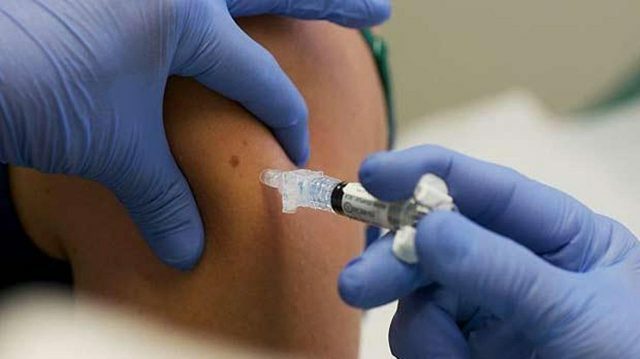The smallest bacteria of mycoplasma are scattered in the surrounding space. They live in the soil, on plants, can be found in the human body and animals. For his interesting life a person can meet with 10-16 species of these bacteria.
Some of them do not cause any harm, while others cause the development of inflammatory diseases. Consider what these bacteria are and why they are dangerous for women.
What is mycoplasmosis?
- 4 Treatment of mycoplasmosis in women
- 4.1 Effect of mycoplasmosis on pregnancy
- 4.2 Complications of mycoplasmosis
- 5 Mycoplasmosis prevention
What is mycoplasmosis?

Mycoplasmosis is a whole group of diseases that are caused by mycoplasmas. This group of bacteria most often affects the respiratory system, as well as the nervous and genitourinary systems.
Infection of a particular system depends on the path of penetration and the type of bacteria. Some types of mycoplasmas are transmitted by airborne droplets and cause pneumonia.
To date, about 15 kinds of mycoplasmas are known, 2-3 of which can cause inflammatory diseases. Ureaplasmas( cause ureaplasmosis) used to be part of this group, but were placed in a separate class because of the ability to break urea.
About the causes of mycoplasmosis
The cause of mycoplasmosis in women is colonization of the genitourinary system with a large number of mycoplasmas. Microorganisms refer to opportunistic bacteria that can be found on mucous membranes and in a healthy person.
Among all the studied mycoplasma species, only two species of bacteria are dangerous to humans: M.hominis and M.henitalium. Considering pathology almost always mean exactly these two kinds.
How is the disease transmitted?
Suspected for themselves the symptoms of mycoplasmosis, women are always worried - but how is this disease transmitted and can it infect their loved ones?
In most cases, the bacterium is sexually transmitted.
Domestic infection is rare, but in theory it is possible. In addition, a mother with a mycoplasmosis can infect a fetus during childbirth. Especially often, girls are infected because of the peculiarities of the location of the vagina and urethra.
Interesting! In children as they grow older, self-cure for mycoplasmosis can occur. But these cases are usually recorded in boys.
Signs of mycoplasmosis
From the moment of penetration into the body before the appearance of the first signs of mycoplasmosis may take several weeks. First time in women, the disease may not be accompanied by pronounced symptoms.
Mycoplasmosis makes me aware of unpleasant secretions and drawing pain when urinating and intercourse. Because of this meager clinical symptomatology, patients rarely refer to the doctor at the beginning of the disease, attributing the emerging signs of cystitis or premenstrual syndrome.
Symptoms of mycoplasmosis in women
Mycoplasma in women can be accompanied by such symptoms:
- Vaginal discharge with an unpleasant odor. Often against the background of an increase in the number of mycoplasmas, the number of beneficial lactobacilli decreases and bacterial vaginosis develops.
- Itching and burning sensation when urinating.
- Unpleasant sensations during intercourse.
- Drawing pain in the groin.
In women, inflammatory diseases most often cause M.hominis, whereas in men, pathogens are provoked by both types of these bacteria.
For diagnosis use the method of bacterial inoculation, which allows to identify the presence of the pathogen and its sensitivity to antibacterial agents. Precision has and PCR.
Less frequently used ELISA, since the formation of antibodies to mycoplasma occurs only after several weeks, and the acute period of the disease can not be determined by this method.
Treatment of mycoplasmosis in women
Detection of mycoplasmas without the presence of inflammatory pathology and symptoms is not an indication for prescribing medications.
In the determination of inflammatory diseases of the urogenital organs and their alleged association with this bacterium, the treatment of mycoplasmosis in women is carried out with the following drugs:
- Antibiotics. Choose drugs with intracellular activity, for example, Sumamed or other macrolides.
- Immunostimulants( interferon, eleutherococcus, ginseng, etc.).
- Irrigating the vagina with solutions of antiseptics.
- Physiotherapy.
In chronic forms and the presence of complications, several antibiotics from different groups are prescribed.
Effect of mycoplasmosis on pregnancy
There is no definite answer to the effect of mycoplasmas in pregnancy. Since in small quantities this flora is not considered pathogenic.
With intrauterine infection of the fetus, mycoplasmas can cause conjunctivitis, pneumonia and even sepsis. The risk of developing this pathology is higher in premature babies whose immune system is not able to withstand the infection in full.
Important! In order to diagnose mycoplasmosis in pregnant women, it is first necessary to identify a large number of bacteria in the crop, because individual microorganisms are not dangerous.
Complications of mycoplasmosis
The complication of this disease is considered the development of inflammatory diseases of the genito-urinary organs, which can go into a chronic form and cause the development of secondary infertility. In addition, mycoplasmas are one of the causes of pyelonephritis( purulent inflammation of the kidneys).
Prophylaxis of mycoplasmosis

Prevention is aimed at strengthening the immune system of a woman, timely treatment of acute infectious diseases of the genitourinary system, as well as preventing promiscuous sexual intercourse and using condoms.
Mycoplasmas in small amounts do not pose a danger, but it is worth the immunity to decrease, the number of these microorganisms begins to grow.
As a consequence, inflammatory processes begin to develop, which lead to the development of irreversible consequences. To prevent this, you need a constant control of a woman for her gynecological health.



